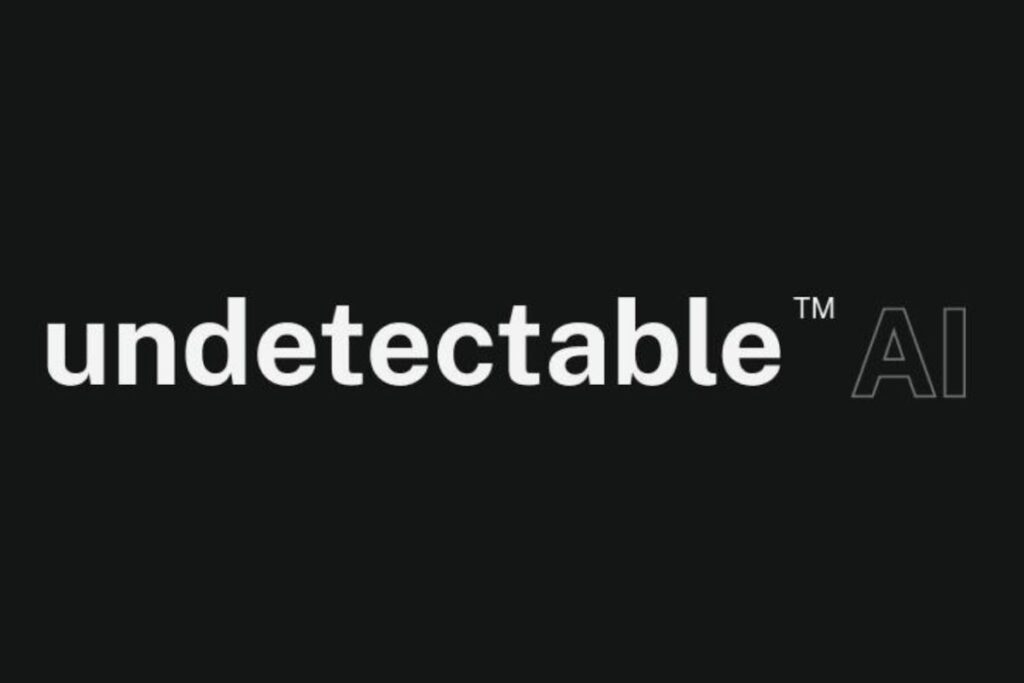Wouldn’t it be nice to earn money while you sleep?
This is exactly what passive income can do… but it can take some time, patience, and good old-fashioned graft to get your passive income stream up and running.
So if you’re ready to go from wondering “what’s a passive income stream?” to actually building one.
This guide will walk you through everything you need to know about how passive income streams work, common misconceptions, and practical ways to start building your own passive income stream as soon as possible.
TL: DR – Passive income streams aren’t passive (at least not at the beginning).
But over time, you can eventually use them to generate long-term, sustainable cash flow with minimal effort.
Key Takeaways
- Passive income requires upfront effort but can generate long-term, sustainable cash flow.
- Common myths include “easy money” and “set it and forget it.”
- Side hustles can evolve into passive income streams with time and reinvestment.
- Undetectable AI tools like Resume Generator and Smart Applier help set up side hustles for success.
What is Passive Income?
From a tax liability perspective, the Internal Revenue Service (IRS) defines passive income as any business activity in which the taxpayer does not “materially” participate.
In simple terms, this means passive income is any money you earn without having to actively work for it.
Key Difference Between Active and Passive Income
If you’ve ever had a job, you’re already familiar with how active income works.


Never Worry About AI Detecting Your Texts Again. Undetectable AI Can Help You:
- Make your AI assisted writing appear human-like.
- Bypass all major AI detection tools with just one click.
- Use AI safely and confidently in school and work.
It’s the money you earn by exchanging your time and effort for a paycheck. And when you stop working, the income stops too.
While active income sources (like a job) offer financial stability and a steady income stream, your earning potential is capped by the number of hours you can reasonably work in a day.
With passive income, though, your earnings aren’t tied to your daily workload.
Instead, passive income comes from assets that generate revenue on their own.
For example, if you buy a rental property or invest in dividend-paying stocks, you can earn income month after month, even if you don’t really “do” much to support the asset.
The same goes for other types of passive income streams, like royalties, digital products, and interest earned from savings accounts.
Common Misconceptions About Earning Passive Income
When people hear the words “passive income,” they (wrongly) assume it means getting rich quickly, without having to work at all.
Unfortunately, that’s not really how passive income works (at least not at the very beginning). Let’s clear up a few common myths.
| 3 Misconceptions About Passive Income | |
| Misconception #1: Passive Income = Easy Money | Most passive income streams require a significant upfront investment in terms of time, money, or both. Online courses? They require research, video production, and marketing. Rental properties? They require capital, financing, and property management. |
| Misconception #2: You Need to Be Rich to Start | While real estate investing or stock portfolios may require large sums of cash in order to make a decent amount of money, there are also plenty of low-cost passive income opportunities worth trying. For example, high-yield savings accounts and peer-to-peer lending platforms allow you to generate income with smaller deposits. Having a website or social media presence can also become a passive income source, with both channels requiring very little investment to get started. |
| Misconception #3: Once You Build It, You Can Forget About It | Even after you’ve built a solid passive income stream, it will never be 100% passive. For example, rental properties require ongoing maintenance and tenant management, and online courses still require occasional updates to keep content fresh and competitive. Stock portfolios also need to be monitored and adjusted depending on market performance. |
Types of Passive Income

When it comes to passive income, the possibilities really are endless.
Here are just a few passive income ideas to consider:
- Bond funds and bond investments
- High-yield savings accounts, money market accounts, and traditional savings accounts
- Mutual funds and actively managed funds
- Online courses and digital products
- Peer-to-peer lending
- Print on demand
- Rental income
- Royalties
- Real Estate Investment Trusts (REITs)
- Stock dividends
Each type of passive income stream comes with its own trade-offs.
Some (like savings accounts) are low risk but offer lower returns, while others (like real estate investing) can be lucrative but require a significant upfront investment.
How Passive Income Works in Practice
Passive income streams always sound great in theory.
But how do they work in real life?
The first step is usually the biggest hurdle, and that’s putting in the work (or money) up front.
Once everything is all set up, that’s when the income can start to flow in with minimal day-to-day effort.
For example, with rental properties, you can get started by purchasing a home or apartment.
Then, you can hire a property management company to look after your tenants.
Once your tenants are in, you’ll earn rental income each month when they pay their rent. While you might need to respond to occasional maintenance issues, the majority of the income flows passively (as long as the property is occupied).
Another example is dividend stocks or bond funds.
Once you’ve invested, these assets will distribute dividend payments or interest payments to your bank account.
The same applies to high-yield savings accounts, where you deposit money once and then continue to earn interest.
The key thing about passive income is that it shifts your role from a “worker” to an “investor” or “creator”.
So instead of exchanging time for money, you’re leveraging an asset to create ongoing revenue for yourself.
Yes, this still involves some work (and in some cases, quite a bit of capital). But the majority of the effort is required at the beginning.
Side Hustles: Bridging Active and Passive Income

The major downside to passive income is that you can’t really create a significant income stream overnight. And this is where side hustles enter the conversation.
What Are Side Hustles?
A side hustle is an extra gig, freelance project, or small business that you work on outside of your normal “day job” to earn some extra income.
The best thing about side hustles is that they can grow with you.
You might start it just to earn some extra cash, but if you’re good at what you do, your side hustle has the potential to become a passive income stream.
Examples of Side Hustles That Can Evolve Into Passive Income
Here are a few examples of side hustles and how they can turn into passive income streams.
Freelancing
Freelance writing, design, or web development often starts as project-based work, but successful freelancers can turn their expertise into online courses, eBooks, templates, or printables.
These resources can then be marketed and sold online to generate passive income.
Consulting
Consultants typically charge for their expertise with an hourly or daily rate.
However, similar to freelancers, consultants can also package their expertise and services into digital products.
So instead of working directly with clients to solve business problems, you can sell courses that teach your clients how to solve their business problems themselves.
Online Tutoring
At first, tutoring requires a lot of time to prep lessons and actually work with students.
However, once you’ve built a strong reputation within your niche, you can sell recorded lessons, pre-built study materials, or subscription-based programs.
Gig Economy Work
Side gigs, like driving for a rideshare app or delivering food, often start as a way to make some extra money.
However, many people use gig economy work to build up their savings, which can be used to invest in real estate or stock portfolios.
Using Side Hustles to Build Skills and Capital

Side hustles are exactly what you make of them. If you just need some extra cash?
You can dip in and out as you need to.
But if your goal is to build a long-term passive income stream, a side hustle can help you develop the skills (and finances) necessary to do just that.
For example, every freelance project or consulting gig gives you the chance to sharpen your expertise, expand your network, and grow your confidence.
At the same time, side hustles also give you that extra bit of income to channel into a long-term investment, like a rental property or stock portfolio.
Setting Yourself Up for Success
If you’re thinking about starting a side hustle, it’s important to set yourself up for success from the very beginning.
The best way to do that is by making sure your professional profile is polished and up to date.
If it’s been a while since you’ve updated your professional profile (or maybe you don’t even have one for the industry you’re looking to break into), the following tools from Undetectable AI can help you get started:
- Resume Generator – for crafting a polished resume that highlights your skills and experience.
- Cover Letter Generator – for creating personalized cover letters for part-time or contract roles.
- Smart Applier – for automating applications when searching for flexible jobs to fund projects.
Yes, it takes some time to get all your professional ducks in a row.
But you’ll thank yourself later when you’ve landed your dream side gig.
Before sharing or publishing your guides, you can also run them through our Undetectable AI’s AI Checker to ensure your passive income advice is original and not AI-generated filler.
It verifies that your content reads naturally, adds real value, and maintains the authenticity your audience expects.
Steps to Start Building Passive Income Streams
Ready to start earning more money? Building a passive income stream doesn’t happen overnight.
But here’s a step-by-step guide for getting things off the ground.
| Step-By-Step Guide for Building a Passive Income Stream | |
| Step 1: Take Stock of Your Finances | Before you throw yourself all-in with your side hustle or passive income stream, take a look at what you currently have in your savings accounts, what your risk tolerance is, and set a budget for how much you’d like to spend. Having an emergency fund and a stable bank account balance gives you the security you need to make smart investments, without overextending yourself. |
| Step 2: Define Your Goals | Why do you want a passive income? Are you aiming to build wealth for your retirement savings? Or do you just want some extra cash in the short term? Knowing the answer to these questions can help you figure out the best types of passive income streams to invest your time and money into. |
| Step 3: Start Small | You don’t need a massive investment upfront. Start with something small (like a simple peer-to-peer lending scheme, money market account, or one-off gig). This allows you to dip your toes in, earn a little money, and figure out what you’ll enjoy doing the most. |
| Step 4: Reinvest Earnings | To build wealth over time, you’ll need to invest at least part of your earnings back into your project or investment portfolio. This is the best way to create sustainable earnings for the long run. |
| Step 5: Monitor and Adjust | Even the most reliable passive income streams need occasional check-ins. Keep an eye on your earnings, expenses, and the performance of your investments, making sure to tweak your approach over time. |
Explore our AI Detector and Humanizer effortlessly in the widget below!
Creating Your Passive Income Strategy
Remember: passive income is not 100% passive. You still have to put in a lot of work to build (and maintain) a successful passive income stream.
The key is to start small, stay consistent, and keep reinvesting your earnings.
Before you make the leap, try Undetectable AI’s Resume Generator and Cover Letter Generator to polish your applications.
Use the Smart Applier to streamline your job hunt and unlock more opportunities while you grow your passive income streams.
This is the best way to transition from relying solely on active income to creating a mix of income streams that bring you stability, flexibility, and financial freedom.
With Undetectable AI, you can secure opportunities faster while building long-term financial independence.
